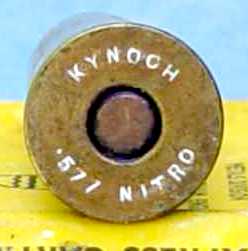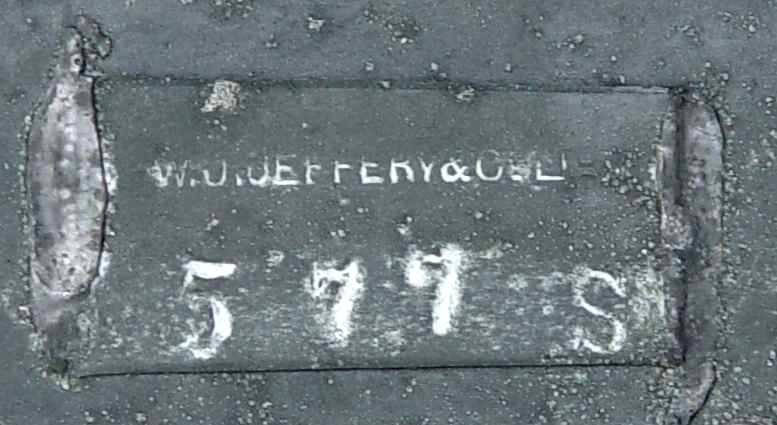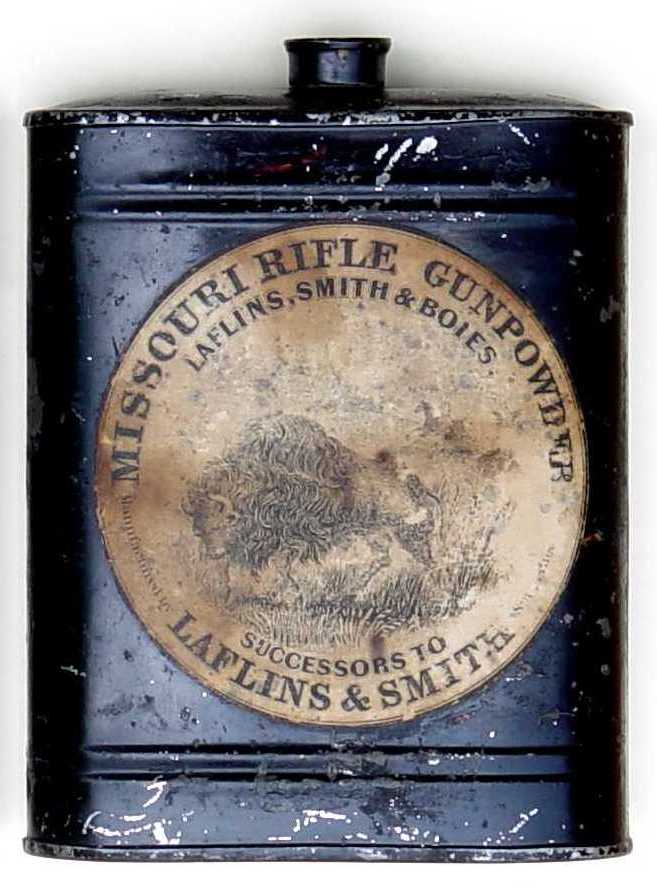|
THE CARTRIDGE COLLECTOR'S EXCHANGE |
| Contents
Cartridge
Lists
Prior Picture Pages:
Links to Other Sites
Cartridge Collectors Organizations:
Auctions:
Books:
Other Collector's Sites: |
Home of the Old Ammo Guy's Virtual
Cartridge Trading Table Featuring a wide range of antique, obsolete, and modern ammunition for collectors Picture Page September 2007 An unusual draw set by the U.S. Cartridge Co....
..
.. .
. . In general, draw sets which show a succession of stages in the production of a cartridge from a disc of copper or brass to the completed cartridge aren't extremely rare. However, when considering the large caliber rimfire cartridges, I believe these sets are quite rare. This one was produced by the United States cartridge Company, and two of the seven pieces have the company's raised 'US' in a depression headstamp, indicating production between about 1880 and 1906. I am aware of two pieces from a .56-56 draw set selling in an early Buttweiler auction, but have never seen any reference to a 'complete' set. . . A tropical tin of .577 - 3" Nitro Express ......
Here's an interesting item, a full box of Kynoch .577 - 3" Nitro Express cartridges which came from the soldered tin tropical pack shown below the box. The cartridges themselves appear to be typical Kynoch production, 750 grain solid bullets held in place in the cases with a three stab neck crimp, the cases bearing a small KYNOCH .577 NITRO headstamp and copper Berdan primers with black sealant. The company name on the back of the box is 'the Kynoch Factories of Imperial Chemical Industries Limited', a name that was adopted as a result of the company reorganization in 1926, and continued to be used until 1962, at which time the name became Imperial Metal Industries (Kynoch) Limited. The tin has no label, but is stamped "W. J. JEFFERY & CO LTD
577 S" on a rectangular metal tab that has been soldered in
place. I assume the cartridges were packaged in this manner by Kynoch for
Jeffery & Co, a London gun manufacturer established in 1888 and
These tropical tins are generally associated with India, but I believe they would have been employed for packaging cartridges that were destined for any location where high humidity might pose a problem for the stored ammunition. .
. .
. . . . . A couple of exceptional powder cans..........
.
Here are a couple of early powder cans, made by Laflins, Smith & Boies at
their Saugerties, New York mill between1854 and about 1860. This company had
its start sometime before 1800, and over the next 110 years went through
quite a few transformations and name changes. Matthew Laflin started
the business in Southwich, Massachusetts under the name M. Laflin. His son
Matthew II took over and was eventually joined by his own son Luther,
resulting in the company name change to L. & M. Laflin. Matthew Lafflin II
dies in 1828, and shortly thereafter his son Luther sold the Southwick mill
and moved to Saugerties, New York to establish another powder mill in 1832
with his brother Matthew III. They continued operating under the name L. &
M. Laflin. In 1843, Solomon A. Smith joined the partnership, and the name
was changed to Laflins & Smith. Following an explosion at the Saugerties
mill in 1849, Luther Laflin and Solomon Smith apparently had had enough of
powder making and left the company. Luther's three sons Henry, Fordyce and
Sylvester, along with their cousin Addison Laflin, continued the business
under its existing name. In 1854, Joseph M. Boies was taken into the
partnership, and the name was changed to Laflins, Smith & Boies. Just before
the Civil War broke out, a new partnership was formed under the name Laflin,
Smith & Company, for the purpose of operating a powder mill at Platteville,
Wisconsin This first can appears to be the more common of the two, it being a one pound can of the company's American Rifle powder, a brand name which was used at least as early as the 1840s when the company was operating under the Laflins & Smith name, and through the 1860s under the Laflin Powder Company name. Pictured on the label is a nattily dressed hunter (somewhat of a dandy, perhaps) who is in the process of loading his long gun. His two dogs wait obediently on either side, one keeping a eye on a pheasant and a rabbit lying at the hunter's feet. Several cans of American Rifle powder with the same illustration on their labels are shown in Gun Powder Cans & Kegs. The second can is also the one pound size, and held the company's
Missouri Rifle brand
Both of these cans, along with a can of DuPont Eagle duck shooting powder from the 1870s, were in a loading box that I purchased some years ago from an antique picker in Missouri. He had found it in the attic of an old home, the contents of which were being sold to settle an estate. The box was pretty much an undisturbed time capsule, everything in it dating no later than about 1890. . . .
|



 powder.
I have seen only one other Missouri Rifle powder can, it being one that was
made as early as the 1840s when the company operated under the Laflins &
Smith name and included in the aforementioned book. Shown on the label of
the can pictured here, as well as on the earlier Laflins & Smith can, is a
running buffalo bull that is being pursued by what appear to be two Indians
on horseback.
powder.
I have seen only one other Missouri Rifle powder can, it being one that was
made as early as the 1840s when the company operated under the Laflins &
Smith name and included in the aforementioned book. Shown on the label of
the can pictured here, as well as on the earlier Laflins & Smith can, is a
running buffalo bull that is being pursued by what appear to be two Indians
on horseback.